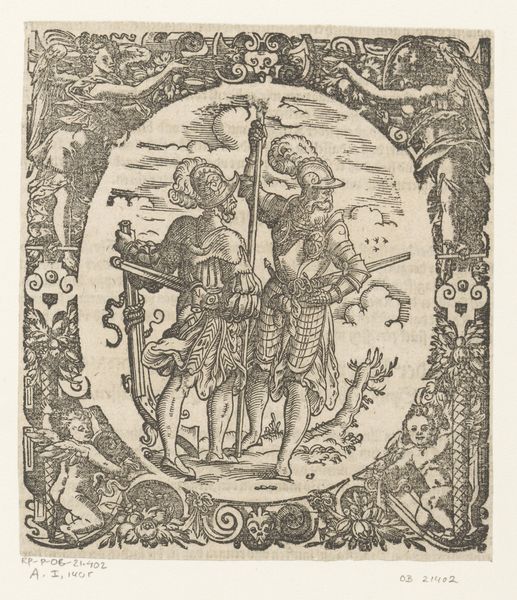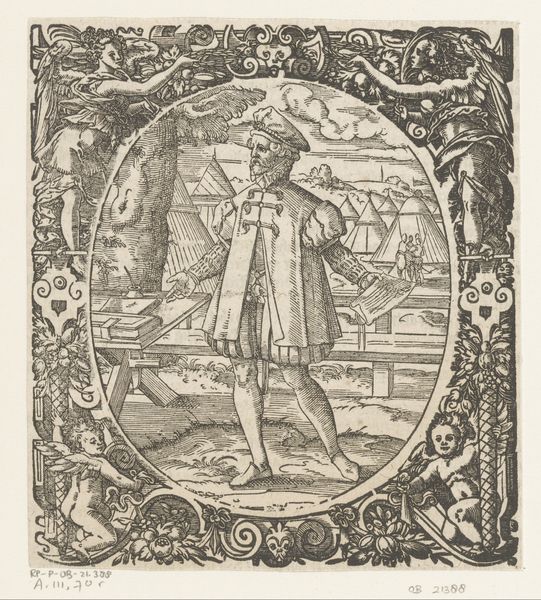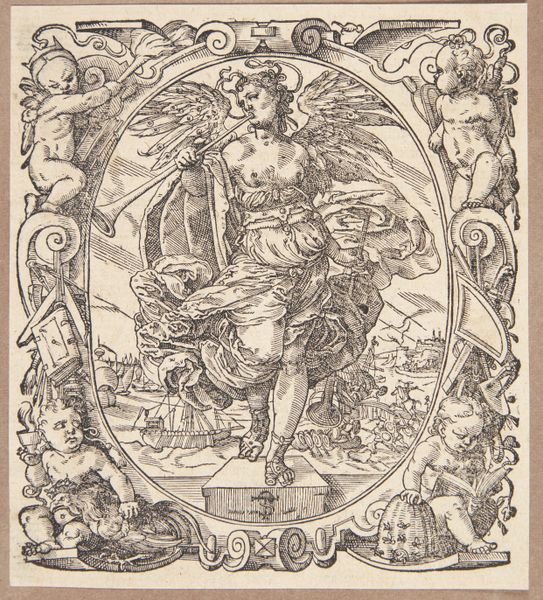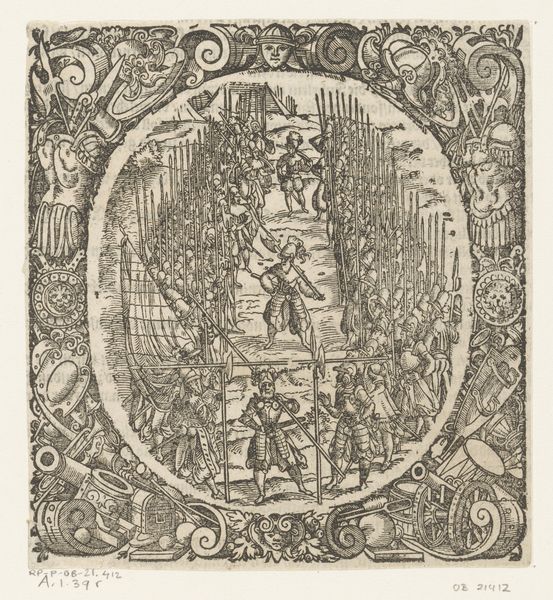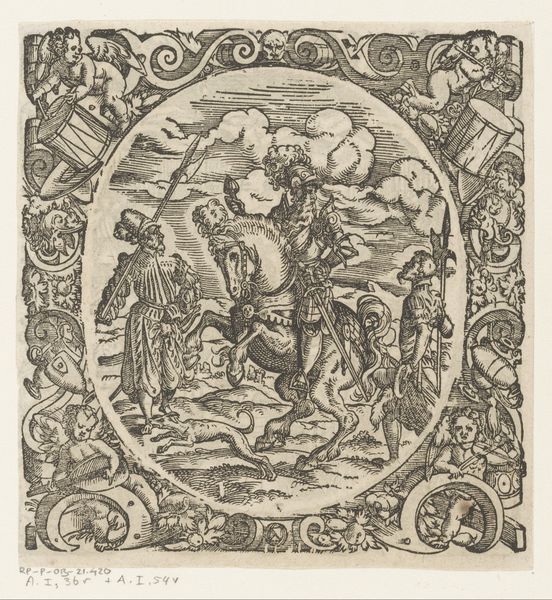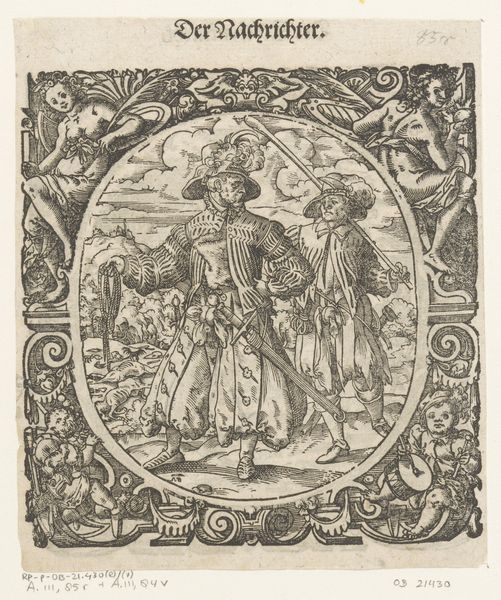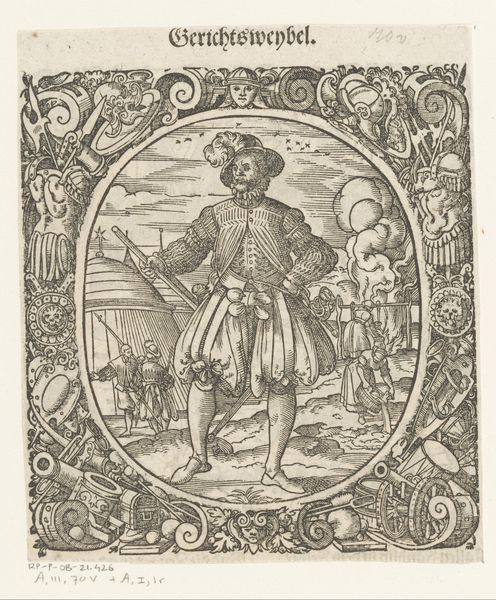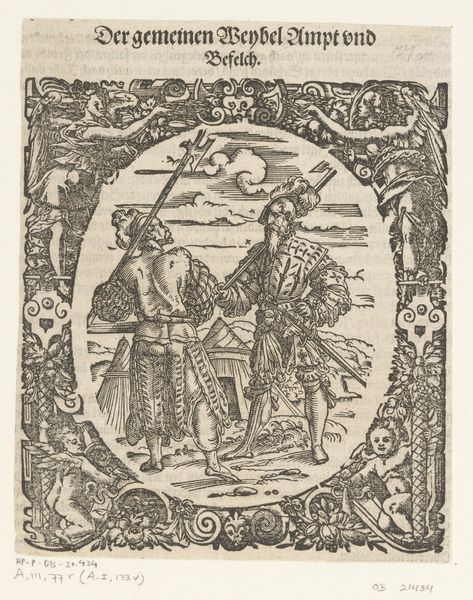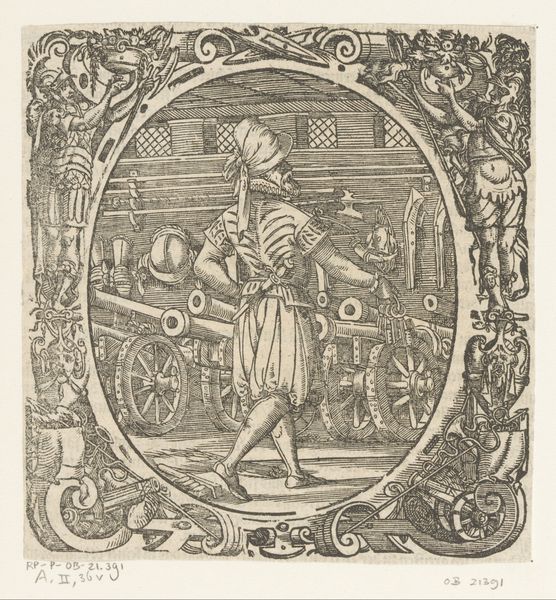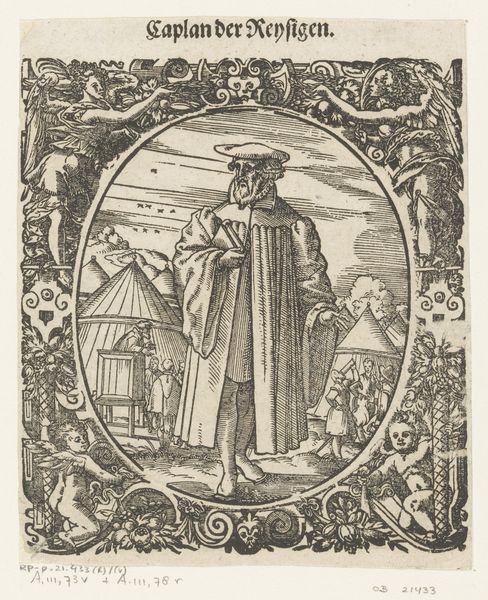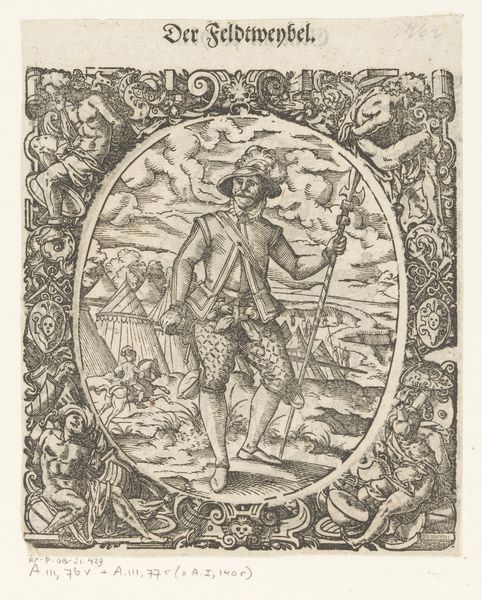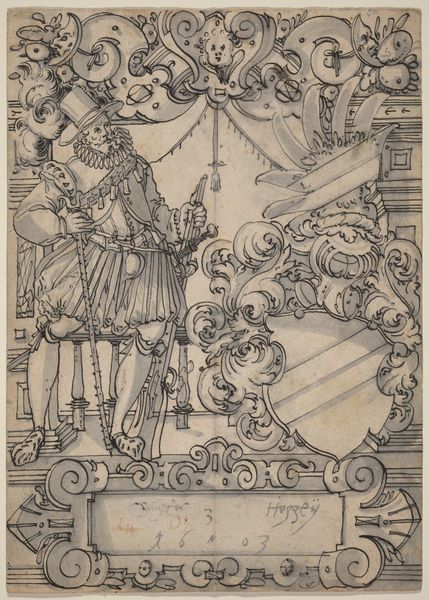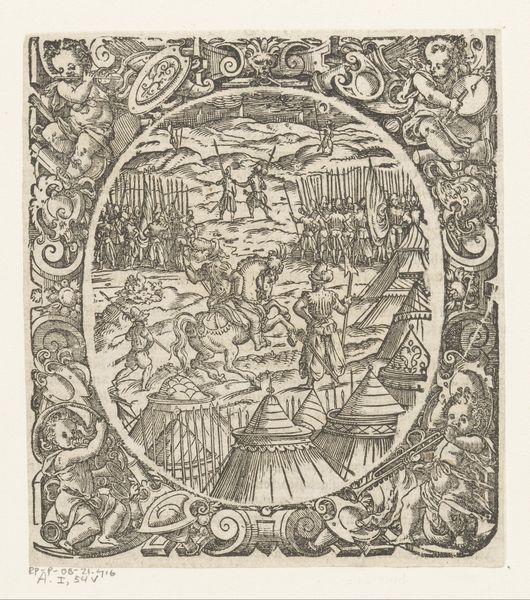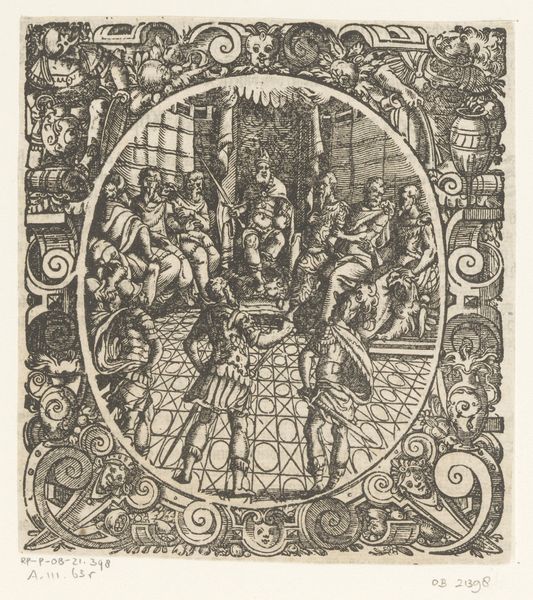
print, engraving
#
portrait
# print
#
mannerism
#
history-painting
#
engraving
Dimensions: height 142 mm, width 132 mm, height 112 mm, width 85 mm
Copyright: Rijks Museum: Open Domain
Curator: Here we have "Landsknecht," an engraving created in 1573 by Jost Amman, currently held at the Rijksmuseum. It strikes me as bold, almost arrogant in its presentation. What's your first impression? Editor: Arrogant is a good word. The composition—the way the figure dominates the frame, surrounded by those swirling decorations, makes it feel almost theatrical, a self-conscious display of power and status. The stark black and white really emphasizes the linear qualities. Curator: Exactly. Consider the material process. This print was part of a larger movement making images more accessible to a wider audience through reproducible media. This Landsknecht, as a mercenary soldier, becomes a marketable commodity, doesn't he? Editor: Yes, and I find the technical skill impressive, the fine lines and detailed rendering of the textures. It's masterful control of the burin that creates that effect. Look at the patterns of the clothing, or the wispy feathers on the hat—meticulous! Curator: Beyond the technical skill, Amman highlights the Landsknecht's role within society. This print, being relatively inexpensive to produce, puts such displays of martial power in the hands of people who, realistically, would never possess that power themselves. Editor: That’s a fine point. Tell me more about the surrounding details—the weaponry, the laurel. What’s your reading of these symbolic elements, in structural terms? Curator: It all builds the idea of militaristic prowess. The cannon at the bottom are interesting when considered against the historical context. Jost Amman made these illustrations during the early years of the Thirty Years' War, after all. He presents not necessarily the Landsknecht himself but more broadly displays the tools that will define the culture for decades. Editor: So you’re suggesting the ornamentation almost serves as a kind of catalogue. I still keep returning to the circular border, it almost mimics the look of a coin, so it's hard to separate this image from the financial incentive that surrounds it. Curator: Precisely! He's a tool for hire. Editor: Very interesting indeed. Thanks for highlighting the economic elements underpinning the visual splendor. I appreciate it. Curator: My pleasure. It is striking to view through the lens of how we continue to consume history through art.
Comments
No comments
Be the first to comment and join the conversation on the ultimate creative platform.
